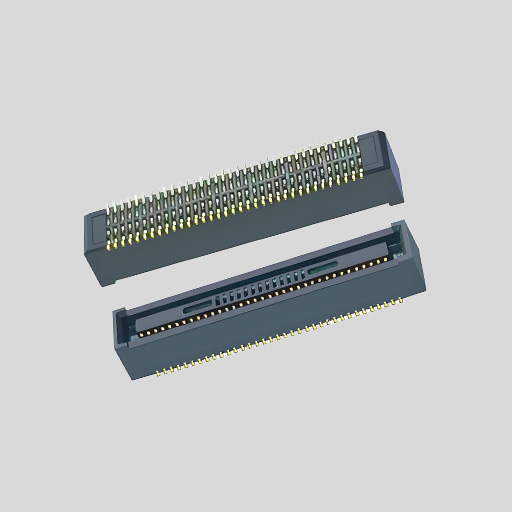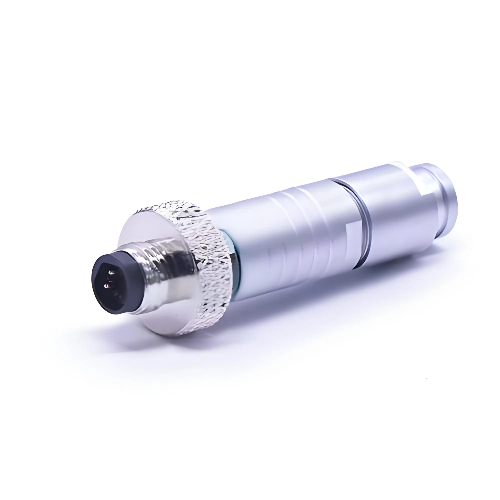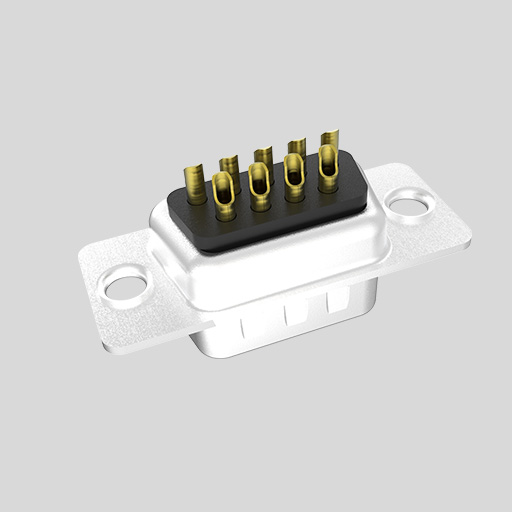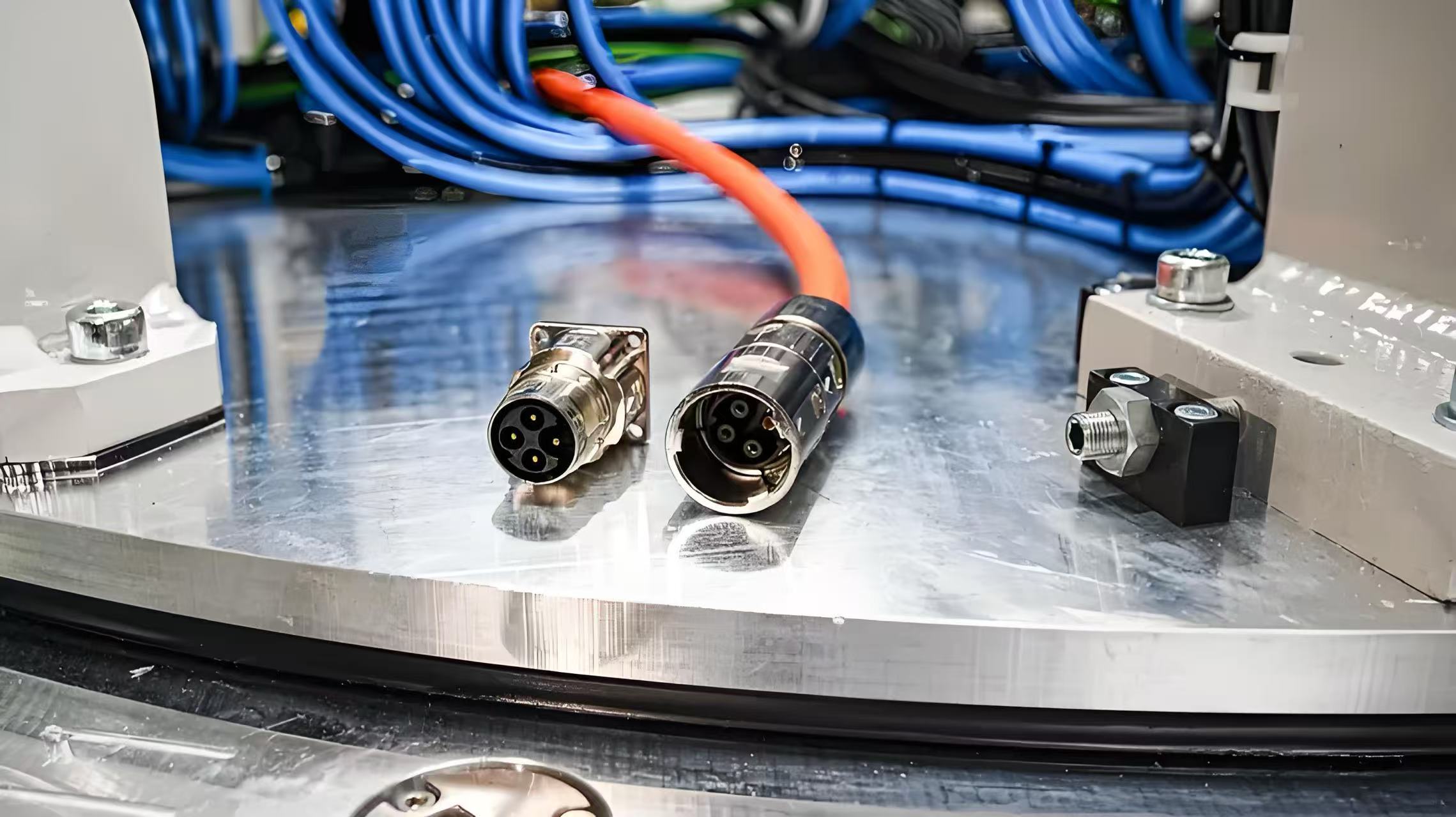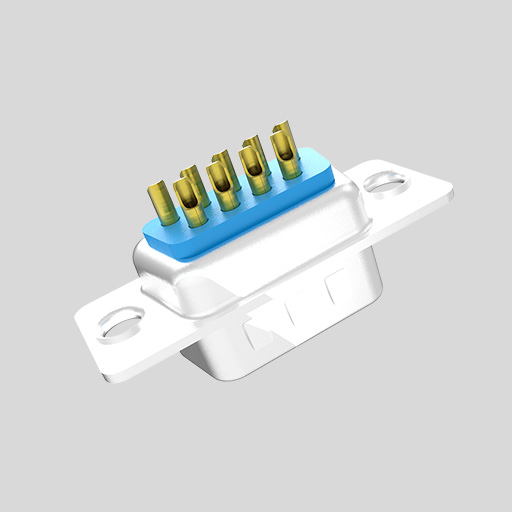
Zrozumienie znaczenia ekranowania w złączach okrągłych
1 | Ukryte zagrożenie: Zakłócenia elektromagnetyczne
Zakłócenia elektromagnetyczne (EMI) i ich bliski kuzyn, zakłócenia o częstotliwości radiowej (RFI), są wszędzie - napędy silnikowe, zasilacze impulsowe, nadajniki bezprzewodowe, a nawet wiązka kabli biegnąca obok szafy sterowniczej. Jeśli zakłócenia te nie zostaną zablokowane, przenikają one do linii sygnałowych, uszkadzają dane i zmuszają systemy do ponownego uruchomienia w najgorszym możliwym momencie. Ekranowanie umieszcza barierę przewodzącą wokół styków okrągłych złączy, zapewniając szumowi ścieżkę o niskiej impedancji do uziemienia zamiast swobodnej jazdy do elektroniki. Specjaliści ds. automatyki przemysłowej zauważają, że "okrągłe złącza są często ekranowane w celu ochrony przed zakłóceniami elektromagnetycznymi, zapewniając niezawodną transmisję sygnału w środowiskach o dużym hałasie elektrycznym". (Rola przemysłowych złączy okrągłych w nowoczesnych systemach automatyki - Amissiontech Co.,Ltd | AMSONE)
2 | Co naprawdę oznacza "ekranowanie" w złączu okrągłym
Skuteczne ekranowanie to coś więcej niż metalowa powłoka. Nowoczesny Złącza okrągłe użycie:
Styki metal-metal 360 stopni pomiędzy wtyczką, gniazdem i obudową, tworząc ciągłą klatkę Faradaya. Komercyjne osłony tylne zapewniają pełną osłonę oplotu dokładnie z tego powodu. (Odkryj wysokowydajne ekranowanie EMI/RFI i zespoły kablowe)
Niskoprofilowe osłony EMI/RFI które zaciskają oplot kabla na całej długości powłoki, dzięki czemu nie ma szczeliny na pola rozproszone. (Odkryj wysokowydajne ekranowanie EMI/RFI i zespoły kablowe)
Powłoki przewodzące-Nikiel, chrom lub kadm - wybrane ze względu na niską rezystancję styku i ochronę przed korozją w trudnych warunkach.
Wkładki filtrujące lub przeciwprzepięciowe w wysokiej klasy wersjach wojskowych, które zatrzymują nie tylko szum szerokopasmowy, ale także wyładowania atmosferyczne i impulsy EMP. (MIL-DTL-38999 Seria I, II, III i IV złączy cylindrycznych - Glenair) Celem jest pojedynczy, szczelny ekran rozciągający się od obudowy sprzętu przez złącze, osłonę tylną i kabel.
3 | Reflektor aplikacji: Automatyka przemysłowa
Napędy VFD, serwomechanizmy robotów i czujniki Gigabit-Ethernet współdzielą zatłoczone panele, w których często występują skoki napięcia i pętle uziemienia. Nieekranowane złącze może zamienić się w antenę; jeden uszkodzony impuls enkodera może spowodować awarię linii produkcyjnej. Złącza przemysłowe Podobnie jak w przypadku wariantów M12 i M23, odpowiedzią są gwintowane obudowy, które blokują się do IP67 i oferują 360-stopniową ochronę EMC - na przykład ekranowane złącze M12x1 firmy CONEC rozszerza osłonę korpusu na płytkę drukowaną i dodaje dodatkowe piny uziemiające dla pełnej ścieżki powrotnej. (Złącze oferuje 360-stopniowe ekranowanie w celu zwiększenia wydajności EMI | Technologia interferencji)
Dla inżynierów instalacji, korzyści są wymierne: mniej uciążliwych przestojów, stabilny ruch PROFIBUS/PROFINET i swoboda prowadzenia wiązek zasilania i sygnałów obok siebie bez skomplikowanej segregacji.
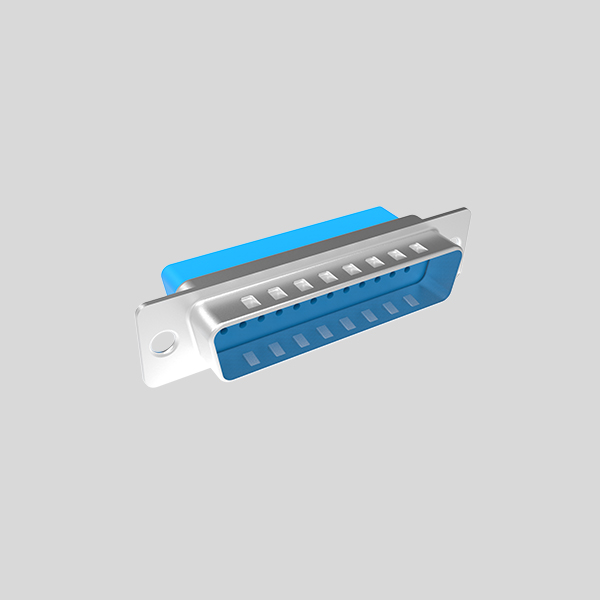
4 | Aplikacja Spotlight: Urządzenia medyczne
Szpitale to pola minowe EMI - cewki rezonansu magnetycznego, defibrylatory, Wi-Fi i czytniki RFID konkurują o widmo. Monitor pacjenta nie może sobie pozwolić na utratę pakietów tętna, a norma IEC 60601 ogranicza dopuszczalne emisje. Okrągłe złącza klasy medycznej radzą sobie z obiema kwestiami dzięki pełnym ekranom 360°, które osiągają tłumienie lepsze niż 95 dB przy 10 MHz i 80 dB przy 1 GHz. (Podsumowanie produktów w zakresie ekranowanych złączy EMI/RFI) Seria 03 firmy Lumberg zapewnia ekranowanie nawet w plastikowych obudowach o małej średnicy, zachowując szczelność IP68 dla powtarzających się cykli sterylizacji. (Przegląd produktów okrągłych złączy medycznych)
Rezultat: czyste przebiegi EKG, niższe ryzyko fałszywych alarmów i dokumentacja zgodności, która przechodzi przez laboratorium testowe.
5 | Aplikacja Spotlight: Wojsko i lotnictwo
Radia bojowe, radary i sterowniki fly-by-wire mają jeden niezbywalny wymóg - przetrwanie, gdy wszystko inne zawiedzie. Okrągłe złącza MIL-DTL-38999 serii III osiągają ten cel dzięki potrójnemu gwintowi zapewniającemu odporność na wibracje i opcjonalnym stykom filtra EMI/EMP, które ograniczają przepięcia wywołane wyładowaniami atmosferycznymi, zanim dotrą one do awioniki. Katalog Glenair zawiera listę wariantów kwalifikujących się zarówno do uszczelnienia środowiskowego, jak i wbudowanych elementów filtrujących do tłumienia EMP. (Złącza cylindryczne MIL-DTL-38999 serii I, II, III i IV - Glenair)
Ekranowanie nie dotyczy tylko integralności danych; chodzi o zapewnienie misji, gdy wrogie zagłuszacze lub nuklearne EMP zagrażają platformie.
6 | Lista kontrolna projektu: Właściwe ekranowanie
Krok Dlaczego ma to znaczenie Wskazówka terenowa Zachowaj 360° zakończenie oplotu Każda przerwa działa jak antena szczelinowa Złóż oplot kabla na pierścieniu uziemiającym przed obkurczeniem termicznym. Wybór właściwej powłoki Odporność na styk i korozję Nikiel sprawdza się w większości przypadków; kadm nadal rządzi w ekstremalnych testach mgły solnej. Strategia uziemienia kontrolnego Unika prądów cyrkulacyjnych Uziemienie jednopunktowe dla niskich częstotliwości analogowych, wielopunktowe dla szybkich cyfrowych. Awaria osłony często zaczyna się od mechanicznego poluzowania Dopasuj uszczelnienie IP67/68 za pomocą złącza bagnetowego lub gwintowanego dostosowanego do środowiska. Wczesne testowanie z najgorszym przypadkiem prowadzenia kabli Rzeczywiste instalacje rzadko są zgodne z podręcznikowymi odstępami Umieść prototypową wiązkę obok przewodów silnika i sprawdź schematy oczu przed podpisaniem.
7 | Dolna linia
Niezależnie od tego, czy budujesz roboty, wentylatory, czy wytrzymały sprzęt komunikacyjny, ekranowanie jest cichym bohaterem, który chroni przed uszkodzeniami. Złącza dla robotyki w ogniu - dosłownie lub w przenośni. Poświęcenie czasu na określenie w pełni ekranowanego rozwiązania procentuje czasem pracy bez przestojów, zgodnością z przepisami i zaufaniem klientów.
Gotowy, aby wzmocnić swój następny projekt? Porozmawiaj z naszym zespołem inżynierów już dziś i wykorzystaj ponad 30 000 jednostek SKU złączy - oraz w pełni niestandardowe opcje - do pracy dla Ciebie.


